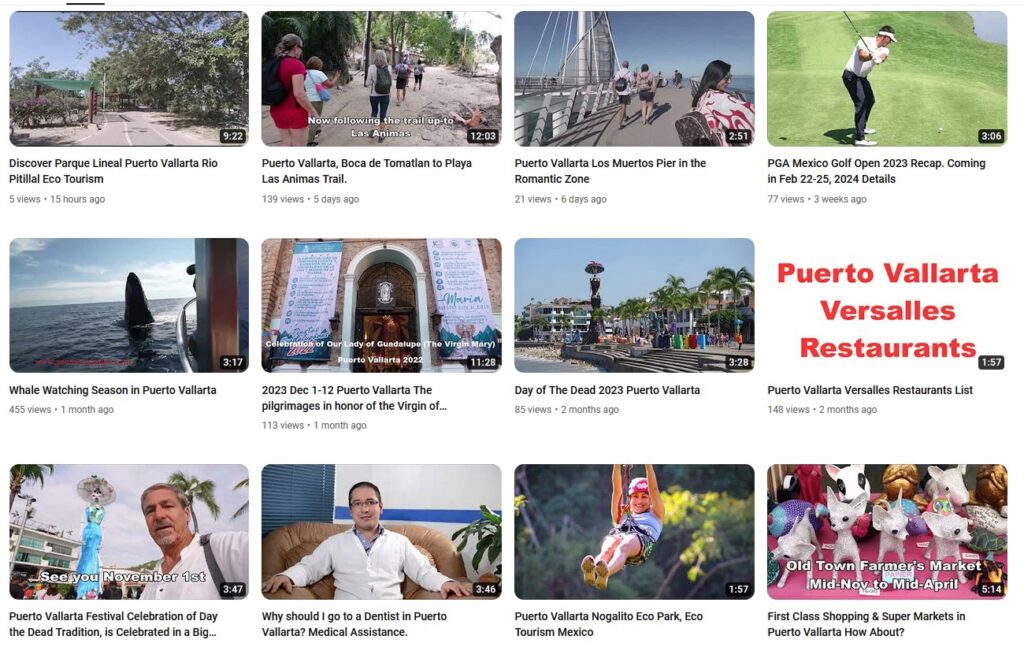Buying Property In Mexico: Step-By-Step Guide For Foreigners
The Property Purchase Process In Mexico
This is my 30th year in Mexico, and I’ve never seen real estate action like I’m seeing now.
And the number of people who’ve chosen to live or buy property in Mexico is unprecedented in my experience. I don’t know if it’s due to the pandemic, politics, or just an idea that’s catching on… but more people are taking action than ever before.
With so many people buying in Mexico, it’s time to take an updated look at some of the quirks and pitfalls of buying here.
Mexico is very familiar, compared to most foreign markets… and that can be a problem. That familiar feel can lull us into believing that we have the processes and protections that we enjoy in our home countries. And that’s not true.
I’ll divide this discussion into two parts. First, we’ll look at a few general areas to be aware of before buying in Mexico. Then we’ll look at the buying process, along with an idea of the costs involved.
Being Aware Of These Issues when buying in Mexico
Here are a few things you should know about buying in Mexico… ways in which Mexico is different from what you might expect.
1. Prime, Oceanfront Ejido Land… Why It’s Mexico’s Best Bargain
Without the issue of ejido land (pronounced eh-HEE-doh) there wouldn’t be anything exciting to talk about when it comes to buying Mexican real estate.
Ejido land is the source of almost all the stories you’ve heard about confiscation of property from foreigners in Mexico. Ejido land can be a terrific bargain, because after buying it, it’s not really yours.
Ejido land is communal agricultural land, which was granted to a community… often an indigenous community. Much of this land, while not worth that much at the time, is now prime, sought-after beachfront property.
In order to buy some of it, you would need the approval of 100% of the community members, separation of your parcel from the ejido, and conversion of that parcel to a freehold title. (And that’s over-simplified… simply identifying the community members and their descendants who should have a vote can be hard.)
Converting ejido land to private ownership is a complicated and difficult process… which is why so many have ignored doing it legally, resorting instead to bribing officials, falsifying records, or just hoping no one will say anything down the road.
There are, however, reputable legal firms in Mexico who specialize in converting ejido land into land that can be sold via a freehold title. If you feel you’ve got an irresistible opportunity to buy legally converted ejido land, I’d still personally recommend the following:
Verify that the property is recorded in the property registry as a freehold title before your purchase (don’t convert it concurrently with your purchase).
Have an independent, third-party attorney review the title’s history and assess the legality of the ejido land’s conversion to freehold title.
Purchase title insurance to guard against future legal claims, which may be valid or frivolous.I personally think it’s best to avoid ejido land altogether.
2. No Restrictions On Foreign Ownership… Almost
Generally speaking, there are no restrictions on the ownership of residential property in Mexico, and you can hold the title in your own name. You can choose to hold it in a trust—for asset protection or estate planning purposes—but it’s not required.
If the property is near the coast or an international border however, special rules will apply. See the following paragraph.
3. Special Rules Apply When Buying Near The Coast Or Land Border
Mexico has a restricted zone—called the Zona Restringida—that occupies a band within 50 kilometers (31 miles) of the coast or 100 kilometers of an international land border. Since the early 20th century, non-citizens have not been able to hold property in their own name within this zone.
But in order to encourage foreign investment, the government created a workaround in 1973, formalized in its current version in 1993. In short, it authorized the use of a trust to purchase property within the restricted-zone. This trust is called a fideicomiso (fee-dey-com-EES-oh) and it’s similar to a Land Trust in the United States.
In U.S. trust parlance, you (the property buyer) are the Grantor of the trust, and also the Beneficiary… so you fully control the purchase, sale, and management of the property. A bank of your choosing acts as the Trustee.
At first, I resisted the idea of having to use a fideicomiso. I actually toyed with the idea of creating a corporation—with all its overhead and reporting requirements—just to get around it. But that was counterproductive.
Instead, I decided to appreciate the benefits of having my property in a trust. It gives me a level of asset protection, and more importantly, allows me to do estate planning—using beneficiaries and contingent beneficiaries—without having to probate a Mexican will or follow normal probate protocols.
Fideicomisos must be renewed after 50 years.
4. The Notary: Not Like The States, Canada or anywhere else.
The role of the notary in Mexico is different from their role in most of Latin America, Europe, or the United States. The notary is appointed by the state governor and must be an attorney with at least five years of experience.
As a buyer in Mexico, the notary is your representative in the process. He is not an impartial third party, and does not represent the seller. Consequently, there is usually no reason hire a second attorney to represent you in a straightforward property sale. The role of notaries in Mexico are most like the roles of escribanos in Uruguay and Argentina.
You may, however, need an additional attorney for a non-standard sale. For example, if you’re forming a corporation or starting a business concurrently with the purchase.
The notary will perform a title search, prepare all the paperwork, process the real estate transaction, record the new title with the municipality, and collect the taxes and fees.
Be sure to hire a notary who is fluent in English, unless you’re a fluent Spanish-speaker. He will serve as your translator, and explain what all those Spanish-language documents are saying.
Don’t have your real estate agent serve as your only translator at the notary office.
And don’t use a notary who does not speak your language.
5. Great! An English Sales Contract
The official language in Mexico is Spanish, and all official documents are in Spanish… including your sales contract and closing documents.
But for simplicity’s sake, most good realtors will give you an English version of the sales agreement. This is a great tool for making sure that you and the seller understand the terms of the deal, such as sales price, included items, or any special conditions or contingencies.
Keep in mind however, that when there’s a conflict between the English version and the Spanish documents that you signed, the Spanish (official) version will govern.
Make sure that any changes made by you and the seller on the English version make it through to the Spanish version at the end of negotiations. At your discretion, you can have some of the official documents translated by a third party.
The Purchase Process, Step By Step
Keep in mind that most of the processes described here will be done by the notary, working with your agent. All you really need to do yourself is sign the documents and write a check for the fees.
1. Make An Offer And Come To Terms On A Price
This is usually done verbally, either with the seller or through your real estate agent.
2. Sign The Sales Contract
This can be called a promesa de compraventa, convenio de compraventa, or contrato de compraventa, depending on local custom. Here is where you document the price and specify the terms and conditions of the sale, including any special payment arrangements and penalties for default.
3. Pay A Deposit
Normally, this will be 5% to 10% of the sales price.
4. Initiate Creation Of The Fideicomiso If The Property Is Within The Restricted Zone
Alternatively, you can transfer the previous owner’s fideicomiso into your name. This can save you time and money, but a transfer does not reset the 50-year clock… the fideicomiso will need to be renewed 50 years from the time it was originally created.
5. Obtain Permission To Complete The Purchase From The Foreign Secretary’s Office
You will be asked to sign a statement indicating that you will not seek foreign legal jurisdiction in dealings with your property transaction… in other words, Mexican property law will govern.
6. Conduct The Title Review And Get The Official Valuation (Called Avalúo)
Once again, the notary will perform or arrange these activities. The valuation will be used to establish the home’s value for tax purposes… so the age-old practice of underreporting the sales price will not work here.
7. Sign The Escritura
Sign the escritura at the notary office, and make the closing payment. When signed and recorded, this escritura will be your title to the property.
8. Pay Taxes, Collect Fees, And Initiate The Property Registration
All of this is done by the notary. You’ll just need to hand over the money.
9. Final Registration
Final registration in the property registry will be completed and recorded within three months.
10. Closing Costs
Closing costs should be about 5% of the purchase price. This includes a 1.5% notary fee, a 2% transfer tax, and a few other odds and ends, including the fideicomiso setup fees. This will be higher if you get a mortgage.
My closing costs came to 5.09% of the purchase price, which included the fideicomiso setup fees and two years’ advance payment of fideicomiso maintenance fees. My annual fideicomiso maintenance fee is MXN 4,820 for 2021, which is around US$240 at today’s exchange rates.
The Bottom Line When Buying In Mexico
Your experience buying property in Mexico will most likely be a good one. There are hundreds of excellent realty companies, and more genuinely-certified REALTOR® agents than I’ve seen anywhere in Latin America.
But there are also some fly-by-night operators and crooks. Most often, it’s a “guy who knows a guy” with a place for sale, or a tour operator, taxi driver, or rental agent who can’t resist the idea of a commission.
Make sure you buy from a reputable real estate company, who employs real agents, and follows the rules.
When in doubt, don’t hesitate to call a time-out and ask questions until you’re satisfied.
Don’t be afraid to clarify Spanish conversations you’re hearing, or terms that are new to you.In the end, the enjoyment you’ll get from your new property in Mexico will be worth the effort.
You can contact me at: marc@mexicopacificlifestyle.com Web site: https://mexicopacificlifestyle.com
We provide information and resources for visitors to Puerto Vallarta, areas of The Riviera Nayarit and other destinations in both states of Jalisco and Nayarit . You will find variety of content, including articles, blog posts, videos, photos, descriptions and interviews, all of which are designed to help visitors plan their trip, including attractions, restaurants, and events. https://promovisionpv.com/

Visit and Subscribe to our YouTube Channel for more Puerto Vallarta – Riviera Nayarit videos: https://www.youtube.com/@promovision/videos

Marketing, Advertising Tourism, Restaurants, Real Estate, Events, Tours, Puerto Vallarta – Riviera Nayarit https://promovisionpv.com/marketing-advertising-tourism-restaurants-real-estate-events-tours-puerto-vallarta-riviera-nayarit-2/
Disclaimer: This information is not a legal process and can change at anytime and only a guide from the contributor.
Web site: https://promovisionpv.com
YouTube: https://youtube.com/promovision
Instagram: https://instagram.com/promovisionpv/
Tweeter: https://tweeter.com/promovisionpv/
Threads: https://www.threads.net/@promovisionpv
Facebook: https://facebook.com/ray.dion.73
Blue Sky: https://bsky.app/profile/promovision.bsky.social


